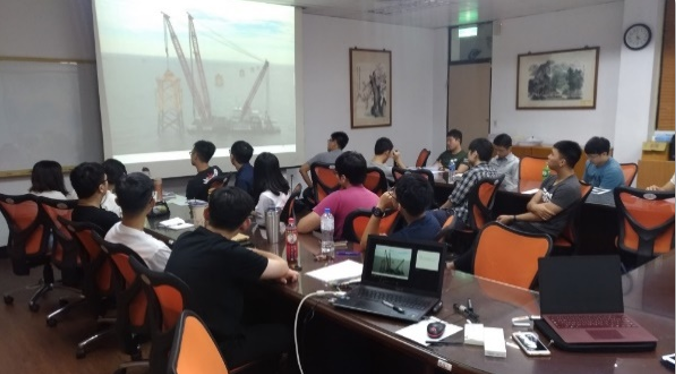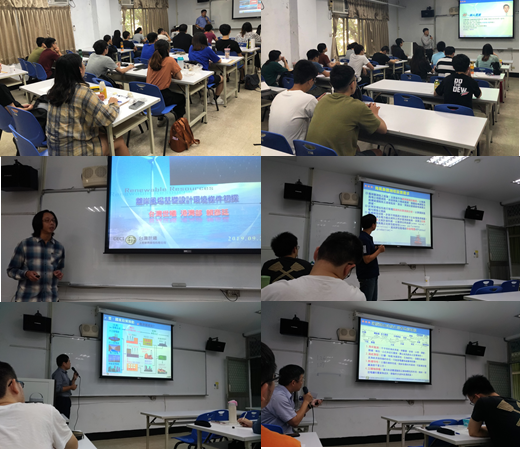Talent training for offshore wind power
|
Talent training for offshore wind power |
|
Prof.Shih-Hsun Yin of Civil Engineering Taiwan has limited natural resources and lacks self-produced energy. Nearly 98% of its energy supply depends on imports, and its dependence on fossil energy is high. On the other hand, global greenhouse gas reduction pressures are increasing. Taiwan is expected to reduce more than 50% of greenhouse gas emissions in 2005 by 2050. In order to achieve the goals of energy conservation, carbon reduction, and stable power supply, the government is fully promoting the development of renewable energy and related industries. Among them, wind power generation is becoming the fastest growing renewable energy in the world due to its relatively mature technology and relatively high power generation efficiency. However, Taiwan is a small and densely populated area, and the excellent wind farms available for development in the land area are becoming saturated. Therefore, offshore wind power generation has become one of the key projects in Taiwan to promote the use of renewable energy. The government announced the "Thousand Sea and Land Wind Turbines" plan in 2012. The project is supported by the Energy Bureau of the Ministry of Economic Affairs to establish the "Thousand Sea and Land Wind Turbine Project Promotion Office". It is hoped that by 2030, the total number of onshore and offshore wind turbines will exceed 1,000. Through the construction of the demonstration wind farm, a complete industrial chain will be built. Attract more companies to invest, and hope that the cumulative capacity will exceed 4,000 megawatts by 2030. Since the conditions of Taiwan’s localization are different from those faced by other countries, including the characteristics of typhoons, earthquakes, high temperatures, and high humidity, in addition to relying on the technology of the offshore wind power industry abroad, it is also urgent to establish localized regulations and certifications for Taiwan in order to achieve the goal of localization of the wind power industry. Therefore, in 2019, with the support of the Standards Inspection Bureau of the Ministry of Economic Affairs, the school created the " Cross-discipline courses of offshore wind power technology" micro-learning program. The inter-academic courses provided by the Colleges of Engineering, Mechanical & Electrical Engineering, and Electrical Engineering & Computer Science combine the background and expertise of three different colleges, enhance students' professional knowledge on offshore wind power, and cultivate more professional talents to meet the needs of offshore wind power talent cultivation. The subjects and credits required for the completion of the program are reviewed and approved by the school. The school will issue the certificate of the Cross-discipline courses of offshore wind power technology program and students will receive it together with the degree certificate upon graduation. Offshore wind power technology covers a wide range of professional fields. Especially the safety and stability of offshore wind turbines and supporting structures are important. Related studies regarding structural analysis and fatigue analysis due to environment loads can ensure safety and stability and reduce engineering risks. The supporting structure of the offshore wind turbine can be divided into three parts: a tower, a transition piece, and a foundation. The tower is the part between the nacelle of the wind turbine and the top of the transition piece. The transition piece is used to connect the tower and the foundation, and the foundation is the supporting structure below the transition piece to transfer the load of the overall wind turbine unit to the seabed. The choice of foundation type depends on the nature of the seabed, the average depth of the seawater, the wind intensity, the wind generator type, environmental conditions (such as wave height and sea current), and construction difficulties, etc. To cultivate domestic professional technical talents in analysis and design of offshore wind turbine supporting structures, engineering investigation and construction, the School of Engineering has prepared the following academic activities and teaching plans, including (1) Holding the "Wind Power Technical Seminar" Actively invite domestic offshore wind power experts to discuss offshore wind power technology and policy directions in the form of technical seminars. Through the seminar, researches on offshore wind power specifications, offshore construction operations, structural soil interaction effects, wind power technology testing and verification and other topics were presented. (2) Holding the "Wind Power Technology Achievement Conference" Entrusted by the Standards Inspection Bureau and the Metal Center, the program FASAT V8 developed by NREL (National Renewable Energy Laboratory) was improved. Through internal modification of the program, the function of pile-soil interaction analysis of an offshore wind turbine structure was developed. The improved version of the software FAST V8_R was adopted to evaluate the overall structural dynamic behavior of the wind turbine for different foundation pile depths and soil spring stiffness when different wind field characteristics, wave load and tower parameters are considered. In the conference, research results were presented to promote the common research and development achievements of the Standards Inspection Bureau and the relevant parties. (3) Inviting professionals to teach for micro-learning program Invite professionals in CECI Engineering Consultants, Inc., Taiwan who actually participated in analysis, design, engineering survey and construction of offshore wind turbine support structures to teach students industry practices so that students have better understanding about design, construction, operation and maintenance of offshore wind turbines. This teaching methodology truly combine academic teaching and technical inheritance, which can help students enter offshore wind turbine industry. In the first semester of the 109 academic years, the college of Engineering will once again provide two micro-learning courses "offshore wind turbine support structure analysis and design" and "offshore wind turbine engineering survey and construction". If you are interested in the offshore wind power industry and want to become a domestic offshore wind technical personnel, you are welcome to take the above courses.
|
|
Inviting professionals to teach for micro-learning program picture |
 |
 |
